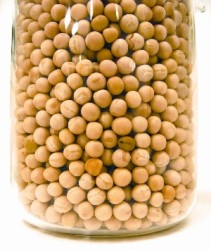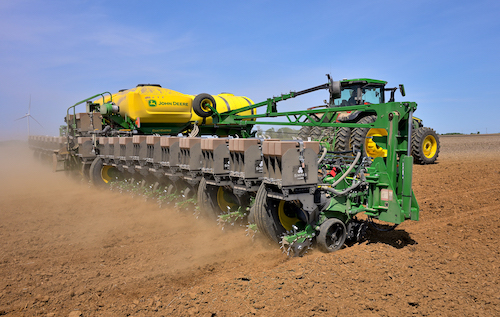Seed Survival

Decades after the first genetically modified (GM) seeds were created, manufacturers are still finding new ways to combat crop damage through genetics.
Resistance Works
Years of advanced chemistry have enabled growers to destroy insect and weed pests that pose a danger to their crops; at the same time, some crops have fallen victim to these same chemicals. Bioengineering has enabled growers to plant seeds that are naturally resistant to the chemicals they use to keep their fields healthy without harming their crops. In the U.S., farmers grow GM crops on about 48% of harvested crop acreage, or 300 million acres, says Sharon Bomer-Laurisen, executive vice president, food and agriculture section, Biotechnology Industry Organization (BIO), which represents over 1,100 biotech companies, academic institutions, and related organizations in the U.S. and 31 other nations. Bomer-Lauritsen says biotechnology is used in 86% of cotton, 92% of soybeans, and 80% of corn in U.S. agriculture.
GM crops reached nearly one-tenth of global crop production in 2008. The coming year will see even more being accepted, such as Monsanto’s second generation Roundup Ready 2 Yield soybeans, which received European Union (EU) import approval in December 2008. EU imports accounted for approximately 10% of U.S. soybean exports in 2007 — a potentially huge market for Roundup Ready 2 Yield soybeans, which will be introduced on 1 million to 2 million U.S. acres for the 2009 season as part of a controlled commercial release.
Increasing Profit
Extending the growing season can greatly improve harvests, and manufacturers are working to develop traits that will expand not just the growing season, but the growing area; for example, Syngenta is working on specific corn hybrids for high soil pH tolerance and drought tolerance. Other traits could increase the yield’s profitability, such as Syngenta’s research into corn’s ethanol rating and feed value.
Thousand Oaks, CA-based Ceres, Inc. has launched its first seed sales of non-food, low carbon crops under its Blade Energy Crops label. The switchgrass and high-biomass sorghum seed — developed specifically as raw materials for biofuels and bioenergy — will be available in early January.
“Traits will continue to be an important tool for the seed industry,” says Tom Strachota, CEO, Dairyland Seed. “Trait providers are investing heavily to bring new products to market, and that will increase the choices for producers.”
Joining Forces
For years, stacked traits have been the biggest sellers on the scene, providing growers the ability to improve yields and combat the forces of nature all in one seed. Companies are moving beyond stacking their own traits, however, and are beginning to build upon one another’s. Pioneer’s Optimum GAT technology — due out in soybeans in 2009 and corn in 2010 — provides tolerance to glyphosate and ALS (acetolactate synthase) herbicides, as well as improving yield. Syngenta has obtained the rights to Optimum GAT technology, and has joined with DuPont’s Pioneer to create GreenLeaf Genetics, a joint venture to market their genetics to other seed companies. At the same time, Monsanto and Dow AgroSciences have joined forces to develop SmartStax corn — a stack of eight different genes for herbicide tolerance and insect protection.
Hitting Fields In 2009
This year will see some interesting varieties hit the market. In December 2008, Pioneer introduced a new business strategy, PROaccess, to increase its market reach through co-brands, second brands, and investments. PROaccess will give Pioneer access to distribution systems covering an additional 5% of US corn acres. In addition to acquiring the Curry Seed brand, Pioneer will use its PROaccess distribution network for VPMaxx, G2, Supreme EX, and HPT corn and soybean varieties, as well as RPM corn hybrids.
Seed Stock Uncertainty
With so many varieties available and more coming out all the time, which — and how many — should a retailer stock? In today’s economic climate, it’s hard to gamble on what growers might need. For example, Syngenta’s Agronomy Research shows the effect of planting dates on corn yields over 14 years and 59 locations. Data proves that fields planted from April 4 to May 10 produce much higher yields than those planted later. Early planting, however, can leave fields open to devastating loss from sudden cold snaps or vicious spring storms. In 2008, U.S. corn harvests were planted behind schedule due to weather. Should retailers focus on weather-resistant seeds, in case 2009 repeats this pattern?
On the other hand, USDA will review federal guidelines on Jan. 20 as to whether it should deregulate GM corn for ethanol production. If it does, GM corn varieties could be a sound investment.
It will basically come down to a region by region basis; if glyphosate resistance is a major problem in the area, then those seeds engineered for glyphosate tolerance will be important to that market.
Whichever direction retailers choose to go this year, experts recommend limiting GM seed stock to just a few of the many varieties now available to reduce economic risk. With the next big wave of biotech seeds scheduled to arrive in 2010/11, there’s plenty of time to stock up on the new, the improved, and the valuable.





